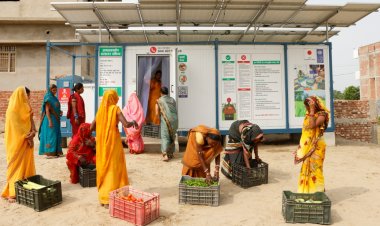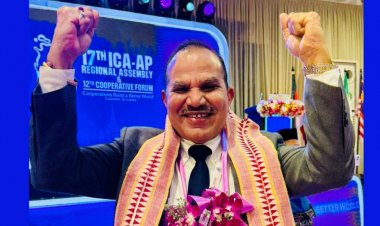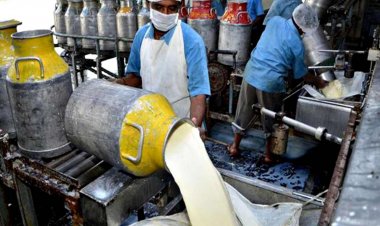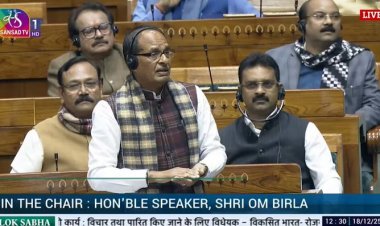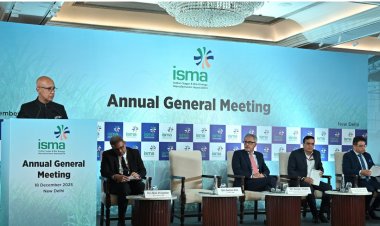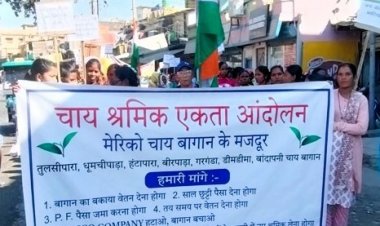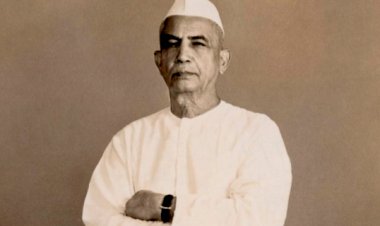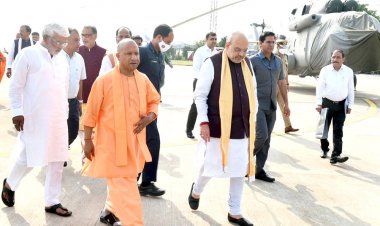Gandhi and Gram Swaraj: Theory and practice
It is appropriate to see where Gram Swaraj (GS) stands on the birthday of Gandhiji, who was so passionate about the autonomy of Panchayati Raj to make villages ideal ones through self-government. In this article, the idea of GS as propounded by Gandhi has been given and examined with the help of examples as to how far that idea has been put into practice in rural areas.

It is appropriate to see where Gram Swaraj (GS) stands on the birthday of Gandhiji, who was so passionate about the autonomy of Panchayati Raj to make villages ideal ones through self-government. In this article, the idea of GS as propounded by Gandhi has been given and examined with the help of examples as to how far that idea has been put into practice in rural areas.
Gandhi’s idea of Gram Swaraj
An ideal Indian village will be so constructed as to lend itself to perfect sanitation. It will have cottages with sufficient light and ventilation built of material obtainable within a radius of five miles. The cottages will have courtyards enabling householders to plant vegetables for domestic use and to house their cattle. The village lanes and streets will be free of all avoidable dust. It will have wells according to its needs and be accessible to all. It will have houses of worship for all, a common meeting place, a village commons for grazing its cattle, a co-operative dairy, primary and secondary schools in which industrial education will be the central fact, and Panchayats for settling disputes. It will produce its own grains, vegetables and fruit, and its own Khadi. This is roughly my idea of a model village. In the present circumstances, its cottages will remain what they are with slight improvements. Given a good zamindar, where there is one, or co-operation among the people, almost the whole of the programme other than model cottages can be worked out at expenditure within means of the villagers including the zamindar or zamindars, without Government assistance. With that assistance, there is no limit to the possibility of village reconstruction.
But my task just now is to discover what the villagers can do to help themselves if they have mutual co-operation and contribute voluntary labour for the common good. I am convinced that they can, under intelligent guidance, double the village income as distinguished from individual income. There are, in our villages, inexhaustible resources not for commercial purposes in every case but certainly for local purposes in almost every case. The greatest tragedy is the hopeless unwillingness of the villagers to better their lot.
The very first problem the village worker has to solve is sanitation. It is the most neglected of all the problems that baffle workers and that undermine physical well-being and breed disease. If the worker became a voluntary safai karyakarta, he would begin by collecting night soil and turning it into manure and sweeping village streets. He will tell people how and where they should perform daily functions and speak to them about the value of sanitation and the injury caused by its neglect. The worker will continue to do the work whether the villagers listen to him or not.
Broadly, there are five aspects of Gandhi’s model village. First, self-government or autonomy for its functioning. Second, it should have self-sufficiency in meeting its requirements. Third, sanitation and cleanliness. Fourth, the unwillingness on the part of villagers to better their lot. And fifth, the volunteers should continue to make villagers aware of how to build up model villages.
What is there in practice?
In view of the realities at the grassroots level, the Gandhian idea of a self-sufficient village appears impracticable in the present context. In its place, the idea of a self-reliant village seems better. Under it, villagers have sufficient income to purchase the requisite things from outside the village. In the case of sanitation, a programme has been initiated and commendable progress also been made. But at the same time, villages are also relapsing into insanitation. The idea of sustained sanitation is crucial and has to be addressed squarely.
It is not entirely correct on Gandhi’s part to say that villagers are hopeless and unwilling to better their lot. Villagers with exposure do not have such attitudes. They know about the factors which are helpful in making them excel in life. Here, the role of religion is also important in determining the willingness of people to go ahead in life. For instance, villagers or families which have followed the Arya Samaj (AS) have changed their mindsets. They do not believe in customs and traditions that are anathema to progress. AS has also given space for women and girl education, which has provided an enabling environment for willingness to progress in their respective fields.
As far as the self-governance of villages is concerned, the Government of India made efforts in the form of the 73rd Amendment to the Constitution. And the then Minister of Rural Development G Venkatswamy, while introducing the Constitution (73rd Amendment) Bill in the Parliament on 1 December 1992, said that "this casts a duty on the Centre as well as the States to establish and nourish the village panchayats so as to make them effective, self-governing institutions". And it is an effort towards achieving GS as envisaged by Gandhiji.
Article 243G of the Constitution Amendment Act needs to be quoted with regard to the autonomy of Panchayats: Subject to the provisions of the Constitution, the Legislature of a State may, by law, endow the Panchayats with such powers and authority as may be necessary to enable them to function as institutions of self-government and such law may contain provisions for the devolution of powers and responsibilities upon Panchayats at the appropriate level, subject to such conditions as may be specified therein, with respect to —
- the preparation of plans for economic development and social justice;
- the implementation of schemes for economic development and social justice as may be entrusted to them including those in relation to the matters listed in the Eleventh Schedule.
This Article of the Amendment Act is the head and heart of the entire scheme of devolution and it elevates Panchayats as institutions of self-government or a third level of government besides Central and State Governments.
In this regard, the Report of the Task Force on Panchyats in 2001 rightly observed that Panchayats require adequate personnel, finance and functions to implement their decisions. In fact, these three components of devolution are complementary to one another in strengthening PRIs. In fact, devolution with reference to PRIs means the transfer of 29 subjects given in the 11th Schedule of the Constitution to the Panchayats (means devolution of functions at a particular level of Panchayat — Village Panchayat or Panchayat Samiti or Zila Panchayat — should be clearly defined) with requisite funds (how much funds are required to complete various activities given to the Panchayats under functional devolution as mentioned above) and functionaries (Panchayats should have adequate personnel at their disposal to handle tasks assigned to them and work in a free environment within the proper legal framework).
Let us see the realities in this regard. The Ministry of Panchayati Raj got a “devolution to Panchayats” study conducted in 2015-16 across the states. This study revealed that none of the states or UTs had achieved 100 per cent or complete devolution even after more than two-and-a-half decades of the enactment of the 73rd Amendment to the Constitution. The position is not better even now. It shows the lukewarm attitude of political leaders and bureaucrats towards the empowerment of these institutions in enabling them to function as self-governing institutions in the real sense. Only one State (Kerala) has achieved three-fourths of the intended devolution. And only seven states, namely Kerala, Karnataka, Maharashtra, Tamil Nadu, Telangana, Sikkim and West Bengal, have achieved 50 per cent and above devolution in the country in practice.
To conclude, on Gandhiji’s birthday, Panchayats have to be elevated as a government of the third stratum with adequate powers and authority and not an annex to the governments at the state and central levels. At the same time, elected representatives of Panchayats whose number is huge (more than 30 lakhs) should also come forward to use provisions of the Panchayati Raj Acts to mobilize additional finances at their levels and establish peace and social harmony by organizing meetings of the Ward Sabha and Gram Sabha in the villages. The role of civil society is also very important to make villagers and Panchayat leaders aware of their responsibilities.
(The author is a former officer of the Indian Economic Service and is currently the President of the Karpa Foundation)



 Join the RuralVoice whatsapp group
Join the RuralVoice whatsapp group


















